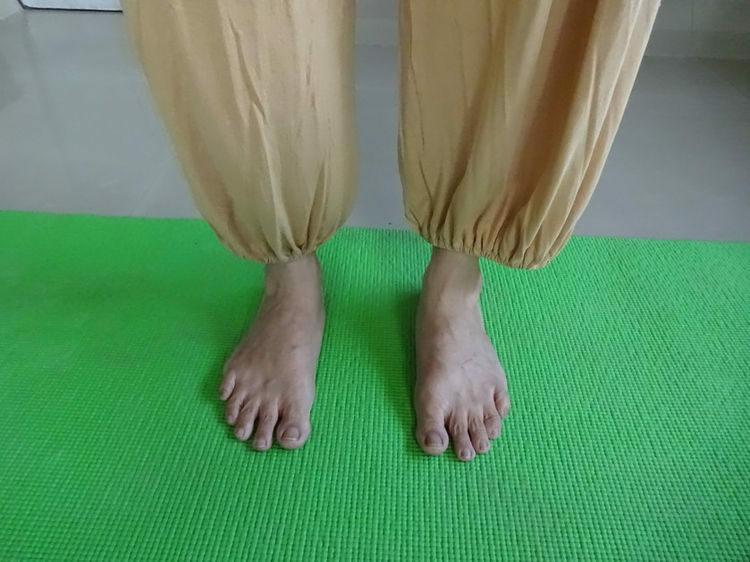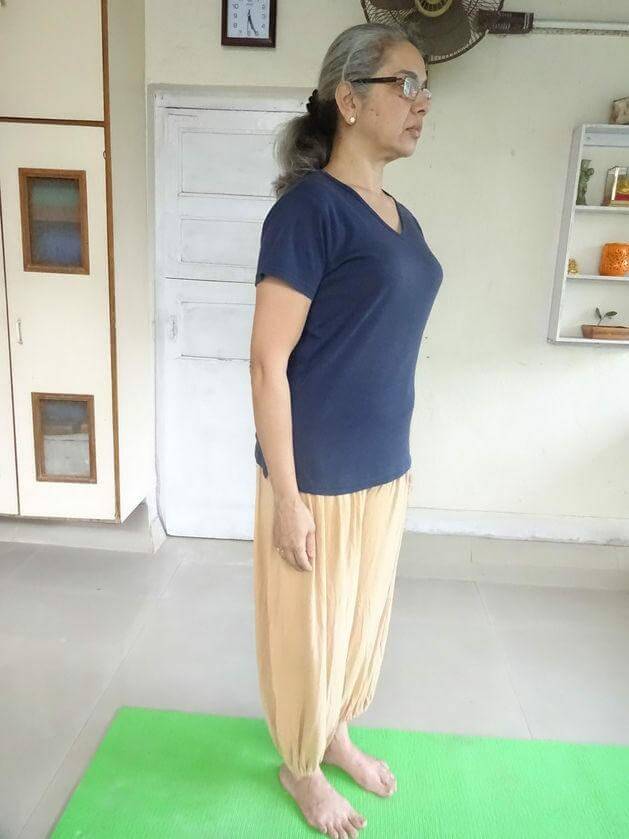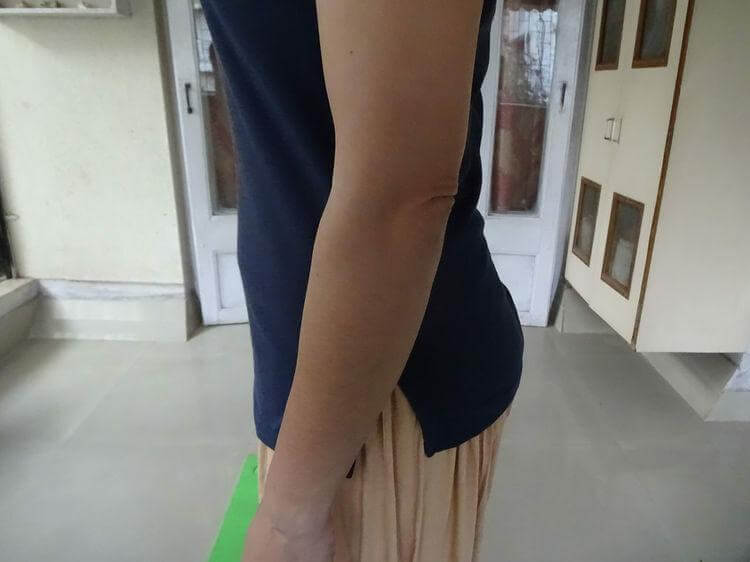Author: Randeep Singh / go to all articles on Yoga Concepts

Nature has designed the
human body in a way, ‘
that the internal organ systems
get to function at their full potential,
and efficiency in relation to
each other as well as to the
force of gravity of Earth.
These requirements are taken care of,
by the way the body is carried or held in right position,
while it is in various movement modes.
Here I am going to discuss the correct position of standing, or what is the correct standing position. All these rules described here are encompassed in the general principles for alignment in yoga.
What is Correct Standing Position?
The first requirement of a correct standing position is an erect, vertical spine with the vertebrae stacked above each other in a straight line, the entire spine held up with the right curvatures. The main weight bearing joints of the body are positioned vertically on top of each other supported by healthy feet and strong leg muscles for a pain free standing position.
The very first rule is that the outer edges of the feet must be parallel to each other. The distance between the feet must be equal to the width of the hips, or equal to the length of one foot ( measure this distance by placing the second foot perpendicular to the foot facing the standing direction and then placing the instep of this foot ( facing the standing direction) at the point where its toes had ended).

Turn the feet in for a Correct Standing position
One of the common standing position mistakes while standing is that the feet remain turned outwards making the letter “V” with the heels placed nearest to each other. The right way to -place the feet is by turning the toes in by half an inch from the parallel position. This helps with overall balance and stability of the posture along with activating the adductor muscles along the inner legs.
While standing make sure that the ankles do not collapse inwards as this will decimate the arches of the feet. The mounds of the toes need to be pressed down, lift the toes up and spread them out, this will intensify the aches, now place the spread toes back on the ground, keeping the arches intact. the body weight must be equally pressed on the three weight-bearing points – mounds at the roots of the big toe, and the last smallest toe, and one in the center of the heel- on the soles of the feet.
Relieve the knees of undue stress
Another of the common standing position mistakes is related to the way the knees are held, the weight of the body is erroneously put on the knees due to which the knees get pushed backward in an arch, remaining locked in that position.
This can be extremely detrimental to the health of the knees. to avoid locking the knees in this manner make sure that the body weight is put on the three points under the feet – the first and the fifth toes and the heels – and the knees are consciously kept relaxed. The legs remain straight with an invisible slight bend, without any intern hardness within them.
Lightly clenching the hips, and activating the front of the thighs , quadricep muscles, as if the thigh muscles are slightly pressed against the thigh bones will help keep the knees safe. The tone which thus gets generated in the front thigh muscles pulls the knee cap up preventing the knees from getting locked. Develop the habit of taking a part of body weight on the slightly toned up thighs as explained, this will relieve the major joints of any undue stress upon them.
Hold the navel in for correct standing postion
Contract the navel and keep it slightly pulled in by about half a inch, and make sure that the navel is not held in very tight. Do not hold the breath while doing this rather the slight contraction in the navel region must actually enhance the breathing.
The pull in the abdomen must feel similar to the one experienced when one zips one’s trousers up. Holding the abdomen in this manner would also -prevent the over arching of the lower back while one is in a correct standing position.
The lower Spine must have a shallow inward arch
Avoid an exaggerated arch in the lower back, for achieving this imagine the presence of a tail in the lower back. Now consciously stretch the imaginary tail down towards the heels. Make sure that the knees remain neutral, and the abdomen remains tucked in while the lower back is pulled down in this manner.

Now slightly lift the chest up without disturbing the arch in the lower back, this must increase the distance between the pelvis and the rib cage. The rib cage must be constantly kept held up away from the pelvis. One can even practice by trying to walk by placing a book on the crown of the head, this exercise is good for bringing one’s awareness to any points in the body that are out of alignment while one stands erect.
Imagine a light weight on the head and keep it lightly pushed up, this will contract the muscles of the neck in the front and also provide adequate stretch to the muscles in the back of the neck, elongating the neck upwards in the process. Increase the distance between the ears and the shoulders by slightly lowering the latter.
This will lengthen the spine at the cervical region and will relieve any stress in the area of the neck. Now rotate the arms slightly inward – the palms facing the thighs – to open the chest and engage the muscles of the upper back ( Trapezius muscle).
Glide the head forward for correct standing position
The head and neck must be held vertically in a straight line over the spine. Keep the chin slightly down, parallel to the floor. The tip of the head as seen from behind must be the highest point of the body while standing.
See to it that the breath is not labored due to any tension possibly being generated from the effort that is being made for getting into a correct standing position. The jaw must be consciously keep relaxed. Placing the tongue gently against the roof of the mouth automatically relaxes the jaw and the muscles of the neck.
How to check your standing position? The simplest way to check correct standing position is that the ears, the shoulders, the hips, the knees, and the ankles are all stacked over each other in a straight line. In case this is not possible one can do yoga exercises meant specifically for helping one get into a correct standing position.
Correct Standing Position tips
- Toes in, heels out
- Knees Unlocked
- Hips Clenched
- Navel In
- Shoulders Down
- Head Glide
Read other Informative Articles….
Control Sexual Desire with Yoga
